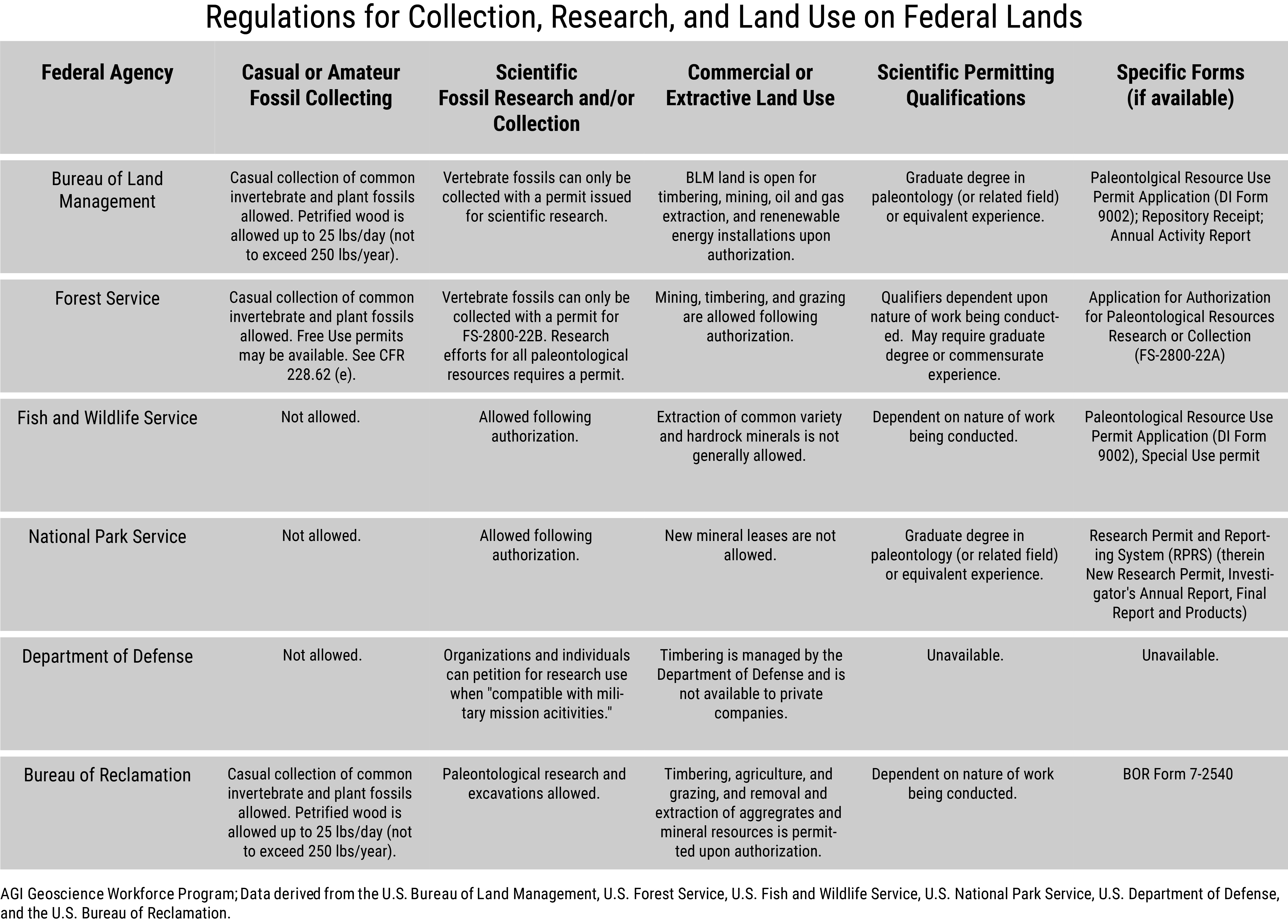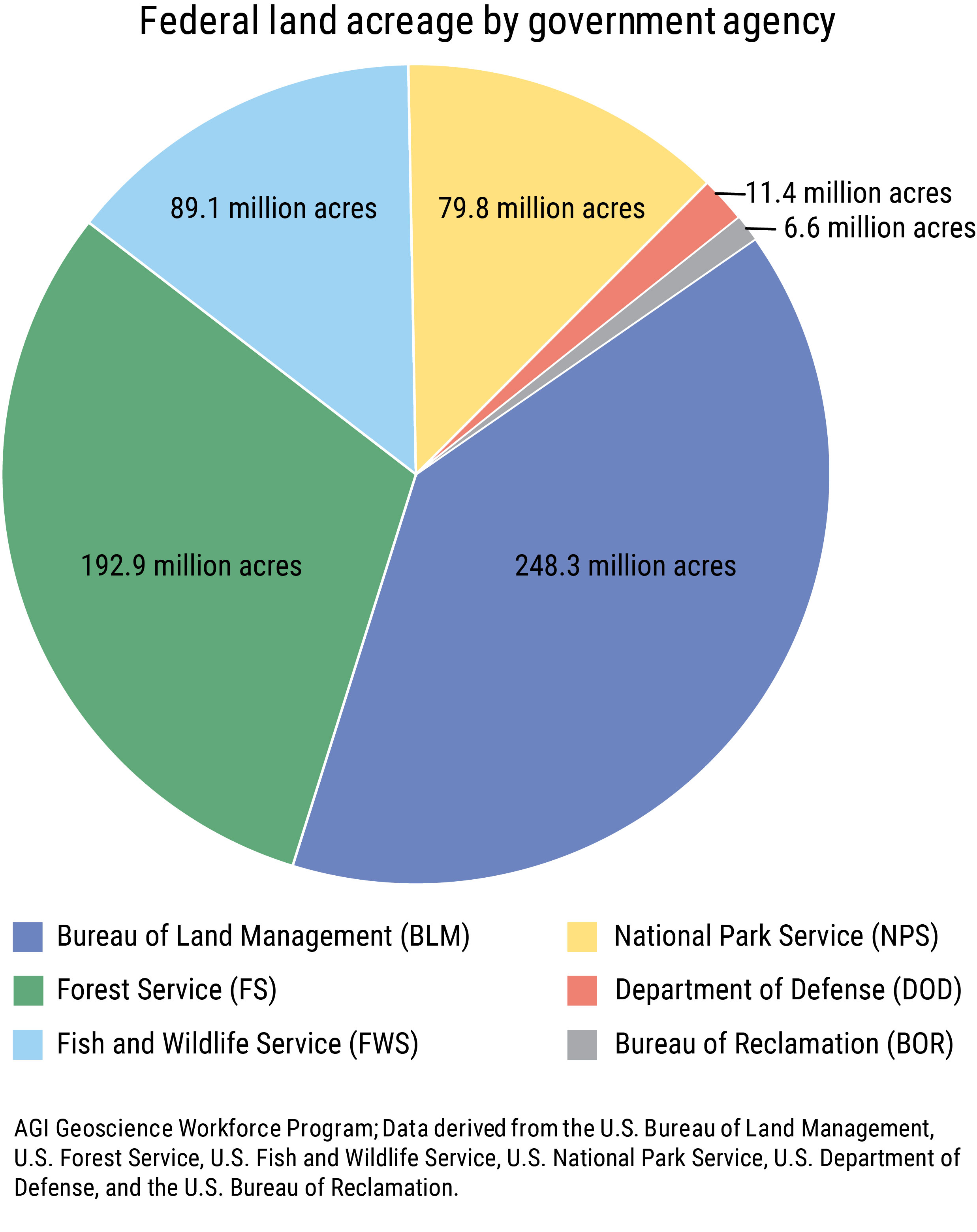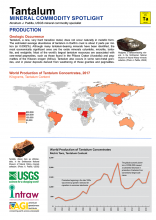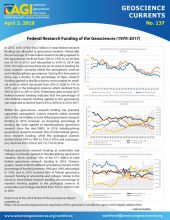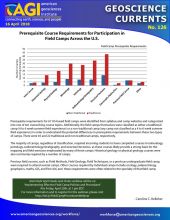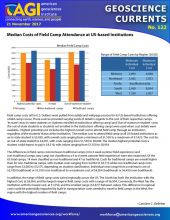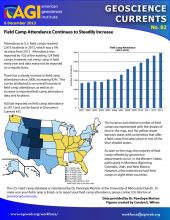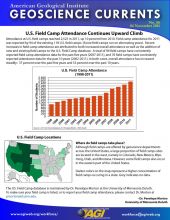Access, permits, and potential land use conflicts
For scientists, geoscientists and paleontologists in particular, access to public lands is crucial. This table illustrates who is allowed to access federal public lands, the permits and expertise required to use them, and whether or not public lands are open to commercial development for any number of applications. The agencies represented here manage more than 97% of all federal land, with the remaining parcels managed by a plethora of other federal entities.
Casual or amateur collecting is considered hobby collecting, meaning that it is only intended for personal use; items collected may not be sold. These specimens can be collected in reasonable amounts, or those that could be displayed or stored in an individual’s home. As such, lands that allow casual collecting are open to the general public. Meanwhile, scientific collecting necessitates an affiliation with an organization, detailed explanations and methodology for the work being conducted, and identified repositories for collected fossils to be deposited.
The juxtaposition of casual, scientific, and commercial use is intended to provoke thought around the prioritization for science or commercial industry. When these two are placed in conflict of most types of public land, theoretically the Potential Fossil Yield Classification is used by the Bureau of Land Management to evaluate the potential impacts of the proposed activities on paleontological resources. Should the proposed land be ranked 3, 4, or 5 (most likely to contain significant fossil yields), the project must conduct further mitigation measures to prevent damage to paleontological resources. However, there is little precedent of consequences enacted against commercial entities that did not fully comply with those assessment and mitigation actions.
This document utilizes information that is publicly available through government publications and resources. If you have had a different experience working with these government agencies, please contact Sophie Hanson at shanson@americangeosciences.org.
This research was supported by a grant from the Paleontological Society to AGI for a summer policy internship.
Links to additional resources by federal agency
Bureau of Land Management
- Factsheet: Proposed rule at 43 CFR § 49: Paleontological Resources Preservation
- Instructions to Applicants Paleontological Resource Use Permit
Forest Service
- Application for Authorization for Paleontological Resources Research or Collection
- Federal Register, Vol 80, No. 74, Paleontological Resources Preservation; Final Rule
Fish and Wildlife Service
National Park Service
Department of Defense
Bureau of Reclamation
EveryCRSReport.com

This work is licensed under a Creative Commons Attribution-NonCommercial-NoDerivatives 4.0 International License.
You are free to share or distribute this material for non-commercial purposes as long as it retains this licensing information, and attribution is given to the American Geosciences Institute.


